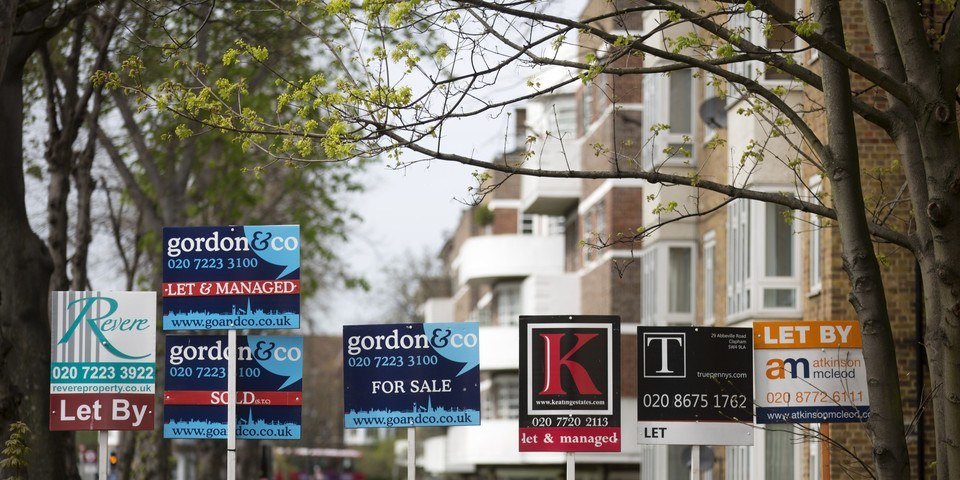By mid-2023, the UK base rate is predicted to reach 4.5%, as a result the majority of landlords are planning to raise rents to offset any increase in mortgage rates and additional expenses.
A new survey of 1,001 landlords by Finbri, shows that over half (52.75%) of landlords are looking to increase rents if the base rate increases to 4.5%. The detrimental impact of the increasing interest rates may increase the existing rental stock shortage faced by the UK property market
Stephen Clark, from Finbri, a bridging loan broker, says, “the base rate is directly linked to the cost of borrowing, so it’s not surprising that landlords are looking to increase rents. It’s not just tenants who may be affected by rent increases if interest rates continue to climb. The UK housing market as a whole could experience further undersupply and combined with a looming recession, there is a growing risk to the property market. We now know that if the base rate reaches 4.5% this year, 44.66% may look to sell their investment properties.”
Why are landlords considering alternative options?
Increasing mortgage rates
The subsequent impact of the increasing base rate has been on rising mortgage rates, with homeowners experiencing high rates as well as a cost-of-living crisis. With the Bank of England base rate predicted to rise to 4.5% by mid-2023, homeowners are looking to take the opportunity to fix their mortgage rates to avoid further increases. This will help mitigate the effects of increasing interest rates and ensure they can retain their home at an affordable cost.
Inflation rising
Higher maintenance costs and the possibility of rent arrears, is commonly a result of high inflation. Consequently, landlords are experiencing significant financial pressures and often have to take this into account when considering rent increases.
Lack of investment properties
53.85% of landlords have had trouble sourcing new investment opportunities. With fewer mortgage products available, increasing chain breaks as a result of rising rates, and 71% of estate agents believing home sellers have set unrealistic prices for their property, investment opportunities are limited. However, there may be an opportunity for investors at auction. In December last year there were 3,300 residential properties available at auction, up 22.8% year-on-year, with 2,250 lots selling, up 6.5% y-on-y. And as a result of more homeowners being unable to meet their mortgage payments, repossessions are a worrying increasing trend set to continue through 2023. With lenders looking to offset their assets, there will be even more properties available at auction.
What options are landlords considering?
With the possibility of increasing rents, landlords are looking for other methods to remain financially viable. Raise rents to cover additional expenses Over half of the landlords surveyed plan to increase their rents if the Bank of England’s base rate reaches 4.5%. This will allow property investors to cover additional expenses and mitigate any cost increases from rising mortgage rates.
Turn to alternative investments
45.35% of landlords will look to alternative investments. There are several types of alternative investments that property investors will turn to if interest rates continue to rise:
- Stocks and shares (31.97%)
- Tangible assets (26.37%)
- Cryptocurrency (25.47%)
- Forex trading (25.27%)
- Private debt (25.17%)
- Hedge funds (24.78%)
- Private equity (23.88%)
- Infrastructure (23.08%)
- Venture capital (22.58%)
- Commodities (22.18%)
These alternative investments can help landlords diversify their portfolio should they wish to sell their properties. For some landlords, the increasing rates may mean a decision to exit the market. Finbri found that 44.66% of landlords plan to sell up or reduce their portfolio if the base rate reaches 4.5%. However, before making such a decision, property investors must ensure they understand the implications of the current market conditions and the cost of exiting the market. Ultimately, the UK property market could face a number of challenges over the coming years as a result of increasing interest rates. However, with careful consideration of the available options, landlords could mitigate the effects of rising rates and continue to invest successfully in property.

Tenants “at sharp end of cost of living crisis”
A think tank says household costs are under more pressure from the cost of living crisis than in the pandemic, with renters “at the sharp end”.
A new Resolution Foundation analysis based on a survey of 10,470 adults examines how the cost of living crisis is affecting people’s ability to meet their housing costs. The share of households who are behind on or struggling with housing costs has risen by almost 70% compared to the peak of the pandemic, from 26% in January 2021 to 44% in November 2022.
The foundation says: “Renters are at the sharp end of the crisis, as private and social rents are rising at their fastest rates in a decade, on top of wider cost of living increases. One-in-12 private renters reported falling behind on housing costs in the three months to November 2022, while over half reported struggling with their housing costs.”
The situation is even more acute for social renters, with nearly one-in-five falling behind and another four-in-10 struggling with their housing costs. Meanwhile just four per cent of mortgagors fell behind on housing costs over this period – although the broad-based nature of the cost-of-living crisis has led to a further 46 per cent struggling with housing costs. The foundation continues: “The lower financial resilience of renters means that they are struggling more to cope with the cost-of-living crisis.”
Nearly half of social renters reported being unable to afford to replace electrical goods, or switch the heating on when needed. This fell to around a third of private renters and roughly a quarter of mortgagors. The crisis has also put a considerable strain on people’s wellbeing, say the authors. More than two-in-five private and social renters reported feeling fairly or very worried about covering their housing costs over the winter, compared to almost a third of mortgagors. The foundation says government intervention during the Covid-19 crisis – banning evictions, rebasing the Local Housing Allowance and mandating mortgage holidays – helped to minimise the impact of the pandemic on households. But it adds: “support is currently much more limited, despite many more households struggling with their housing costs … than during the peak of the pandemic.”
Overall, three-in-five social and private renters were behind on or struggling with their housing costs in November 2022, compared to two-in-five in January 2021. Increases were more dramatic among mortgagors, with the proportion behind or struggling with their housing costs almost doubling (between January 2021 and November 2022. The foundation want the government to do more by re-basing the LHA rates and implementing measures to allow fair mediation between tenants and landlords when arrears build up.
A foundation spokesperson says: “Private and social renters are at the sharpest end of the cost-of-living crisis. The fastest rent rises in a decade, alongside wider cost of living pressures, have left three-in-five renters falling behind on or struggling with their housing costs. This is significantly higher than at the peak of the pandemic, when there was substantially more Government support available to struggling households. With many renters reaching the limits of already depleted finances, this squeeze is having profound impacts on their household budgets and wellbeing. As housing costs are set to continue rising, the situation for renters will worsen without further policy intervention.”

Shock figures show lettings market running out of homes to rent
The availability of stock within the owner-occupied market is now back to a pre-pandemic norm, but the reverse is true for the lettings market. Figures from property consultancy TwentyCi reveal a 5% increase in new instructions to the owner-occupied market in 2022 and a 14% drop in sales agreed which together have resulted in a significant easing of stock available across all regions of the UK.
Most areas now have five months or more of supply, which is more than double the levels in some regions during 2021. This is far closer to the number of houses available for sale back in 2019 prior to the onslaught of Covid-19. Inner London and Wales have the most available stock with over six months, whilst Scotland and the Northeast currently have the least at around four and a half months of stock each. Despite this easing of the supply squeeze, house prices have remained buoyant, 8.4 per cent higher than in 2019, but down from the peak recorded in Q2 2022.
In contrast, new instructions within the lettings market are down by almost 8% compared to 2021 and by over 25% since 2019. TwentyCi says landlords are rapidly withdrawing from the market as tax, regulatory and cost environments have become less favourable.
Apart from Inner London, which currently has four and a half months of lettings property stock on the books, all regions sit between 1.5 and three months of rental homes available. Renters in Scotland and Northern Ireland are in the most precarious situation. Lack of supply is further compounded on the demand side as tenants are deferring decisions to buy because of the cost-of-living crisis. This pressure has resulted in average monthly asking rent reaching £1,652, an increase of £200 since 2021 and almost £300 since the ‘norm’ of 2019.
TwentyCi produces these figures in a New Year report which also shows that the market share of Hybrid/Online Agents overall was 7.3%t in 2022, down from the peak of 8.2 in 2019.
Their share of the market is just 1.1%in properties being sold for £1m or more and 5.3% for homes within the £350,000 to £1m bracket.
TwentyCi managing director Colin Bradshaw says: “2022 was a turbulent year when the widely anticipated housing market re-calibration began to take effect. We’ve seen some key shifts; most markedly in the stock situations for both the owner-occupied and lettings markets. With the cost-of-living crisis continuing to deepen, 2023 looks set to be another fast-changing year and it will be important to keep on top of market trends.”

